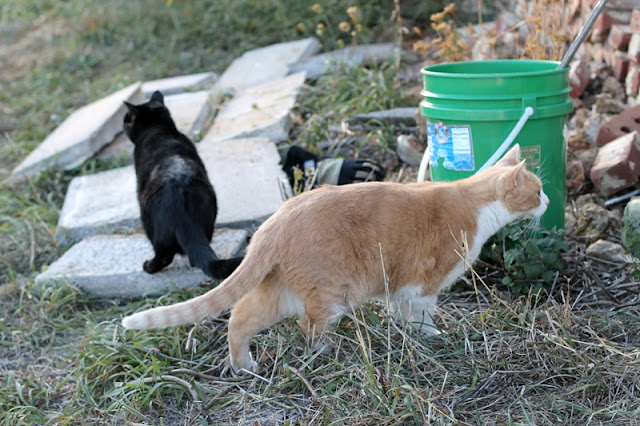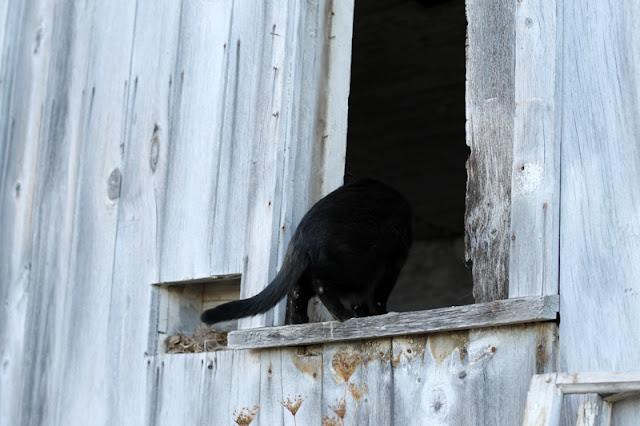There is an old building on our property.
I love this building. It is weathered grey like old cedar and has a slanting metal roof. It has five, five-foot tall windows that all face south.
It is large - 11'x30' - surprisingly originally used as a chicken coop. The old chimney holds witness to the fact that they also used to brood baby chicks in here, keeping them warm with wood stove heat, a task I am happy to hand over to a heat lamp and extension cord.
This building has long sat unused, save for swallows and wasps, and was, when we bought the farm this summer, full of a number of long boards, wood posts, broken glass and about 15 years of dust and debris.
Although it was built for chickens, we'll be using it as a barn this winter. Within its walls it will house our alpacas, any sheep we acquire in the near future, any rabbits we acquire in the near future, and all of our poultry {38 birds and counting!}.
I've dubbed it "The Cheep Shed." Chickens + sheep. And, baby chicks go "cheep cheep." AND we're doing this on the "cheap cheap."
Great progress has been made on renovating the space over the last few weeks. Our friend Allison helped us recently and that made the work go even faster.
{Thanks Allison! Please come back again soon!}
The square hole door was used to muck out the building every spring. We'll be using it as the pop hole door, a door big enough to allow full-grown turkeys to pass in and out. {Papa Bear will be building a ramp for this purpose}.
Boards and debris have all been removed, hardware cloth wire has been added to all of the windows to keep out poultry predators, a stall divider, which we found in the barn, has been installed to divide the poultry side from the ruminant side, and nest boxes - also inherited with the property - have been cleaned up and new bottoms installed to replace the rusted out metal ones (made from the boards we removed from the shed).
An old red gate we found buried in the tall grass near the garden will be the human pass-through door into the poultry side. A very very old ladder that we inherited with our 100-year-old duplex in Duluth and moved with us four times will finally find new life as our roosts.
All we have left to do is lay down some barn lime, lay down some wood chips, add some straw bedding, and put in the poultry.
They'll need to stay inside the barn for a few days to acclimate to their new homes, as for most of their lives they have lived in the mobile chicken coops.
Not long after that we'll add ruminants to the other half of the barn.
And then everything will be just as cozy as can be.
And that is what we do for Cheep Thrills around here on the weekends.
Feel free to join us any time!
Cheers -










































